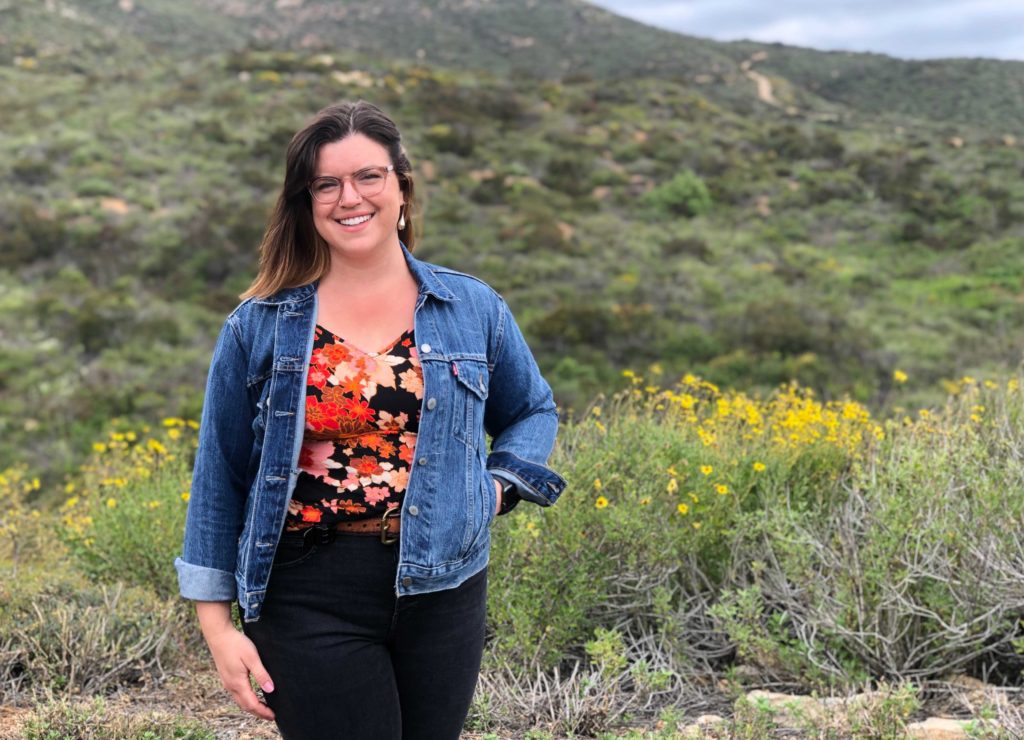Mirit Friedman
Urban and Regional Planning
Ph.D. in Urban and Regional Planning
Mirit Friedman is a doctoral student in the Urban and Regional Planning program, studying environmental planning, climate change adaptation, and integrated land and water management. Mirit’s dissertation research focuses on integrated land and water management through the lens of dam management. Her extensive background in environmental sciences and urban planning guides her research, where she employs a mixed-methods approach to examine the mechanisms and challenges behind local government management of their owned dams. This scope of research extends to the exploration of the potential risks and vulnerabilities associated with such dams. Her unique perspective allows her to view and address the pressing water challenges of today through an interdisciplinary lens. The novelty and urgency of her work has helped Mirit receive funding awards, including a National Science Foundation Doctoral Dissertation Research Improvement Grant and the Rackham Predoctoral Fellowship, among others.
Over the years, Mirit has had the privilege of collaborating with faculty members across the university on issues related to municipal drinking water provisioning and the renewable energy transition. Moreover, she is proud to apply her expertise in a pedagogical context, having developed and currently teaching a class titled “Water you going to do about it? Planning and urban water conflicts”, as part of the Sweetland Writing Fellows program. This course offers students a deep dive into various urban water issues such as sea level rise, flooding, contamination, and drought, through a climate justice lens. In addition to her passion for teaching, Mirit has served as a student leader for the Michigan Urban Planning Doctoral student group (UPDoc), and the Planning Accreditation Board task force on creating innovation in curriculum.
Building on her undergraduate degree in Environmental Sciences from UC Berkeley (2015) and her time working on partnerships and volunteer programs for the National Park Service at the Chattahoochee River National Recreation Area, Mirit came to urban planning to better understand and mediate the urban-environmental interface in the age of climate change. In 2019, Mirit received her Master’s degree from Georgia Institute of Technology in City and Regional Planning, continuing to focus on environmental planning. During her time at Georgia Tech, she worked for the Atlanta Regional Commission, co-developed and co-instructed the Sustainable Cities Studio for undergraduates, and was the Vice President for the Student Planning Association.
Title: The Dilemma of Dams in the Face of Climate Change – State and Local Dam Safety Programs, Policies, and Processes
In this age of climate change, dams present a unique type of infrastructure with new and pressing challenges. For example, on June 24th, 2024, the Rapidan Dam partially failed 12 miles upstream of the City of Mankato, Minnesota. This dam, owned by Blue Earth County and operated by an energy company, had been rated in poor condition by the US Army Corps’ National Inventory of Dams. This rating was due to damage from storm events in 2019 and 2020, despite $6.1 million being spent on the dam over the previous 20 years. The Rapidan Dam failure is emblematic of the situations faced by many dam owners, especially local governments, where dams in known deficient conditions remain unaddressed for years. While dam failures are low-probability events, they carry high costs. The costs associated with ongoing dam infrastructure management often exceed available funds, and the impacts of climate change exacerbate the already costly deferred maintenance, presenting increasing risks to communities. Over 18,000 dams are owned by local governments, which compete for funding from already strapped municipal budgets and high visibility community needs.
I use a three-step approach to understand how local governments make decisions about aging and at-risk dams. To examine these decisions, I ask and answer the following research questions: 1) What support mechanisms (policies, programs, and plans) create a more comprehensive approach to managing dam safety for local governments? 2) How do local governments decide when to repair or remove an at-risk aging dam? 3) Why do some local governments act to modify their dams, while others consider action but do not move forward? I first examine barriers to proactive dam management and case studies of five progressive state and local policies aimed at helping dam owners overcome these barriers. I then use a survey of 121 local government dam managers and case studies of four local governments to examine the decision-making contexts and processes underlying dam management decisions—whether to proactively address a known deficiency or ignore it. I conclude with an assessment of persisting gaps in support structures for proactive local government dam management.
My findings offer initial insights into the national picture of local government dam management. Local governments must manage critical current community priorities alongside low-probability, high-consequence future risks from dams. In cases where local governments did not move forward with modifications despite known deficiencies, they often lacked the funding or technical capacities to support the work. While state support mechanisms sometimes provided opportunities for proactive dam management, they often fell short of meeting the necessary scale and type of support required. I argue that local governments should invest not only in mitigating risks from the structure of the dam but also in measures that mitigate risks upstream and downstream, such as land use control tools and development impact fees. While many local governments can proactively manage their dams, a significant number of at-risk and aging dams remain under local government ownership, highlighting the need for a more comprehensive approach to dam management that extends beyond the structure itself.






